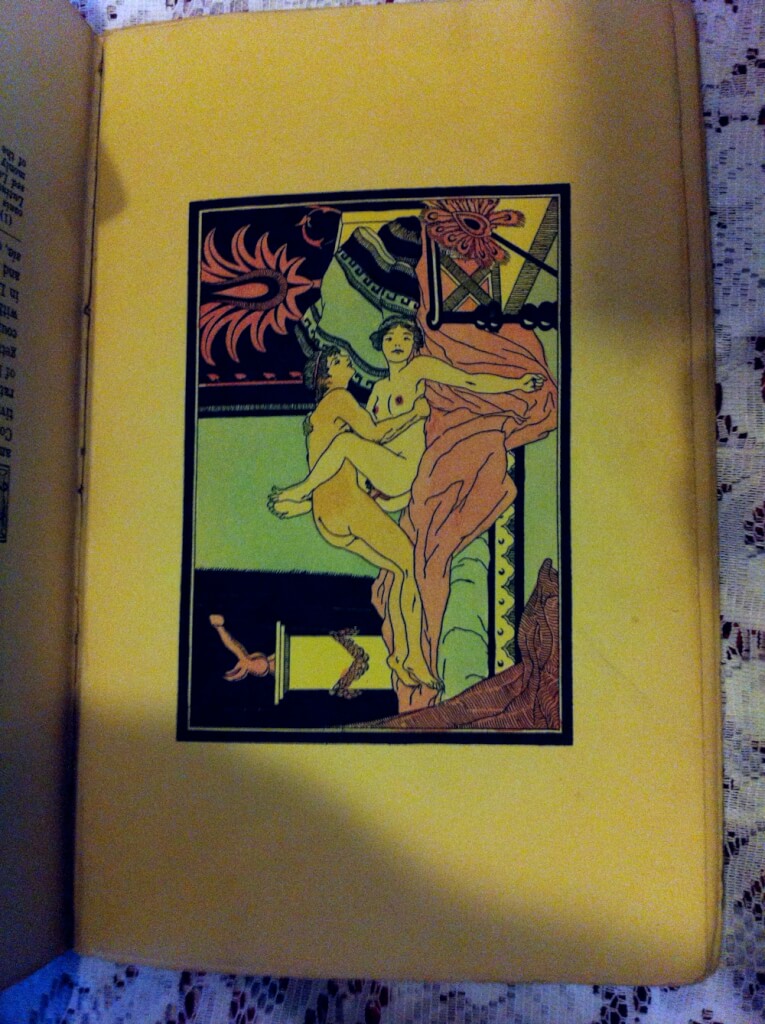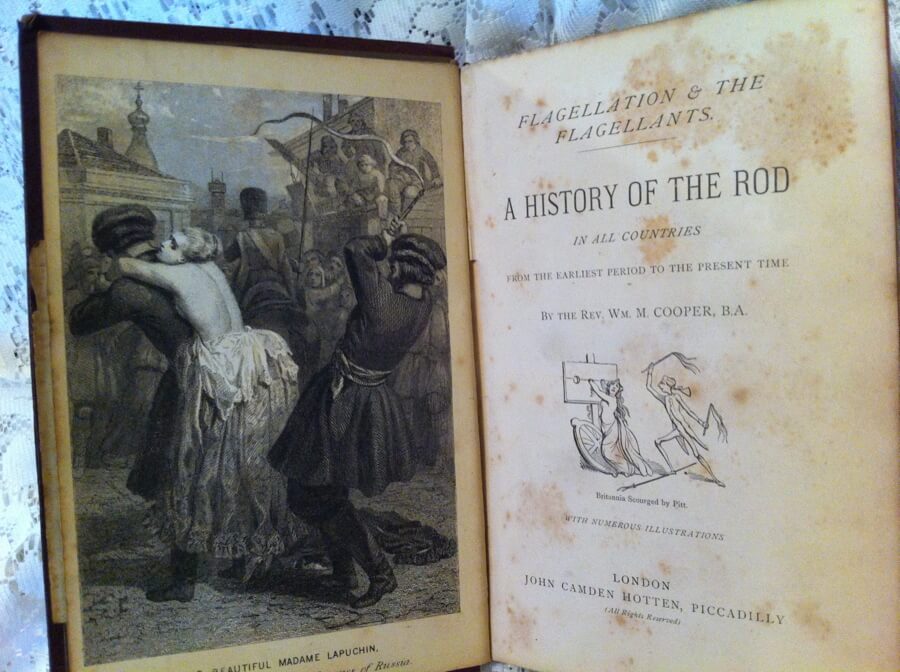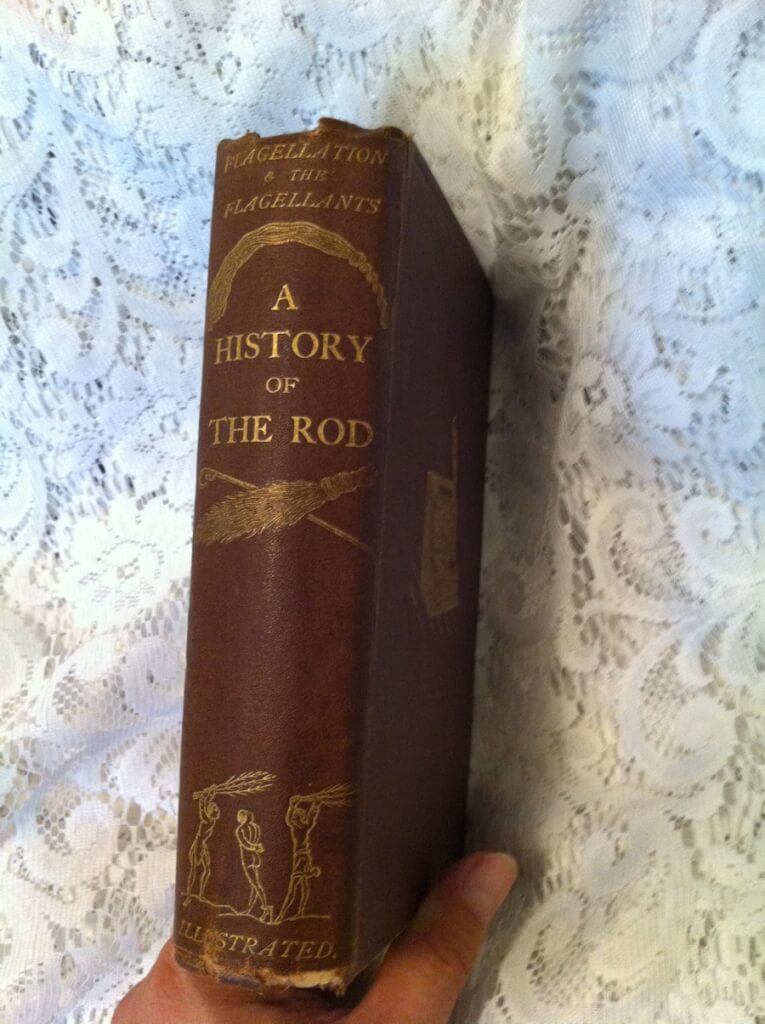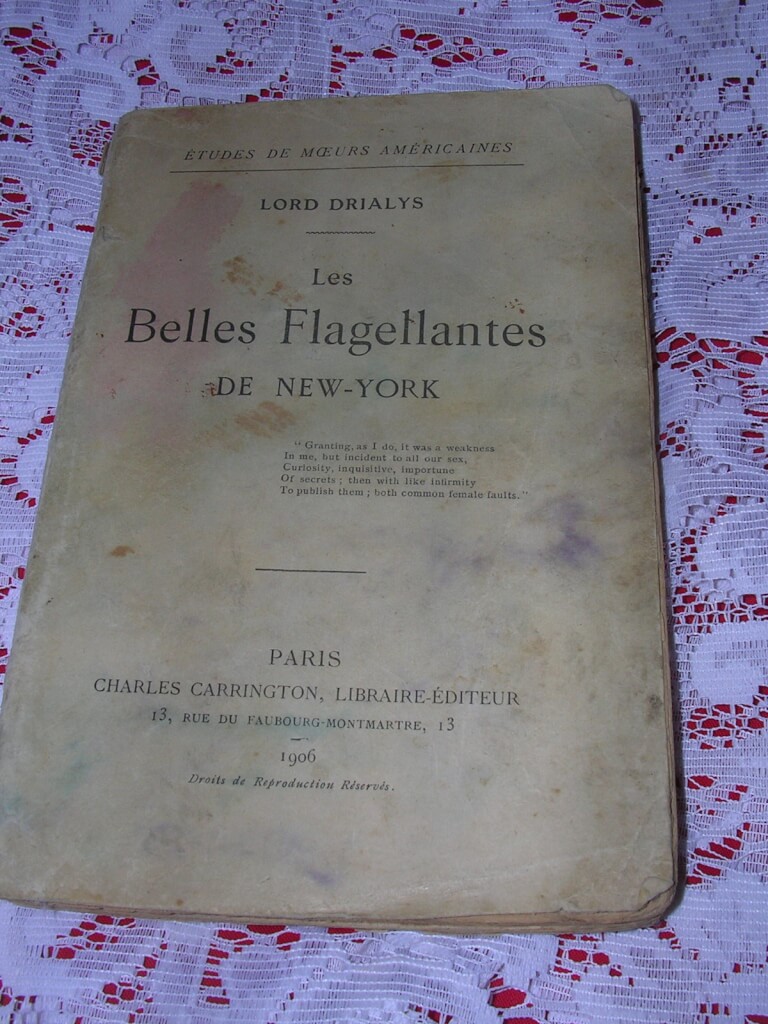The Decameron, Giovanni Boccaccio, trans. John Payne, illus. Clara Tice (Boni & Liveright, New York, 1925, signed and hand numbered by “Boni and Liveright” #908/2000)
7.25″x10.5″, 2 vol., xxix+374pp, x+355pp, original black blind-stamped cloth boards with gilt titles on spine and decorations on front, boards have a front flap covering the fore-edge, printed on hand-laid paper with frontispiece and illustrations throughout, a beautifully executed edition.
The Decameron, (subtitled Prencipe Galeotto or Prince Galehaut), is a collection of novellas by the 14th-century Italian author Giovanni Boccaccio (1313–1375). The book is structured as a frame story containing 100 tales told by a group of seven young women and three young men sheltering in a secluded villa just outside Florence to escape the Black Death, which was afflicting the city. To make their exile more pleasant each of the ten tells the others one story every day. The Decameron records the narratives of ten days — 100 stories. Boccaccio probably conceived of The Decameron after the epidemic of 1348, and completed it by 1353. These tales run the entire range of human emotion: grief, love, humor, anger, revenge. Many are based on oral folklore. Boccaccio’s ten narrators thus retell already familiar stories about errant priests, rascally husbands, and mischievous wives. Variants of these stories are known in many cultures, but no one formulates them more cleverly or relates them more eloquently than does Boccaccio. In addition to its literary value and widespread influence, it provides a document of life at the time. Written in the vernacular of the Florentine language, it is considered a masterpiece of classical early Italian prose.
“This edition of the Decameron has been printed from the Caslon Old Face type set up by the Quinn and Boden Company, Rahway, N.J., on paper specially made by the Reading Paper Mills. The plates for the illustrations were made by the Wilbar Photo-Engraving Company, New York. Printed and bound by the Quinn and Boden Company. The whole plan of the book was made by T. R. Smith and executed by Manuel Komroff. Printed and bound, June, 1925”








